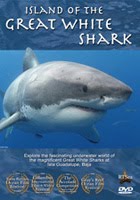 Amidst so many important issues and threats against the planet's natural resources, every now and again one finds a success story. Here's one that shows that it's not too late if people, governments, and corporations recognize the importance of the ecology that surrounds them and work together.
Amidst so many important issues and threats against the planet's natural resources, every now and again one finds a success story. Here's one that shows that it's not too late if people, governments, and corporations recognize the importance of the ecology that surrounds them and work together.Coastal wetlands are home and haven for a variety of plants and animals. Wetlands are a unique ecosystem, often a bridge between freshwater and marine environments. But they have been receding due to commercial development and pollution.
In the southeastern United States, South Carolina has many rivers that work their way to the coast, feeding an expansive network of wetlands. However, to meet the needs of a growing
 population, residential and commercial development has severely impacted these wetlands, particularly over the past 50 years. The wetlands serve as a nesting habitat for several species of birds and one bird in particular, the whooping crane, had long ago left an area known as the ACE Basin.
population, residential and commercial development has severely impacted these wetlands, particularly over the past 50 years. The wetlands serve as a nesting habitat for several species of birds and one bird in particular, the whooping crane, had long ago left an area known as the ACE Basin.The ACE Basin is a wetland where three rivers - the Ashepoo, Combahee, and the South Edisto - empty out to sea south of the city of Charleston. Due to the combined efforts of local landowners, government officials, and other conservation-minded citizens, over a 250,000 wetland acres have now been preserved.
With that, the five-foot tall majestic whooping crane has returned, with two mating pairs regularly wintering in the ACE Basin. The whooping crane had been considered gone from South Carolina wetlands since before the Civil War, so to see it return now is clear evidence that the efforts of the South Carolinians is working.
Congratulations to the people of South Carolina who understand the importance of wetlands to the overall health of their state's ecology.The return of the whooping crane is something to crow - or whoop - about.
Read about the South Carolina wetlands in The Post and Courier.







No comments:
Post a Comment